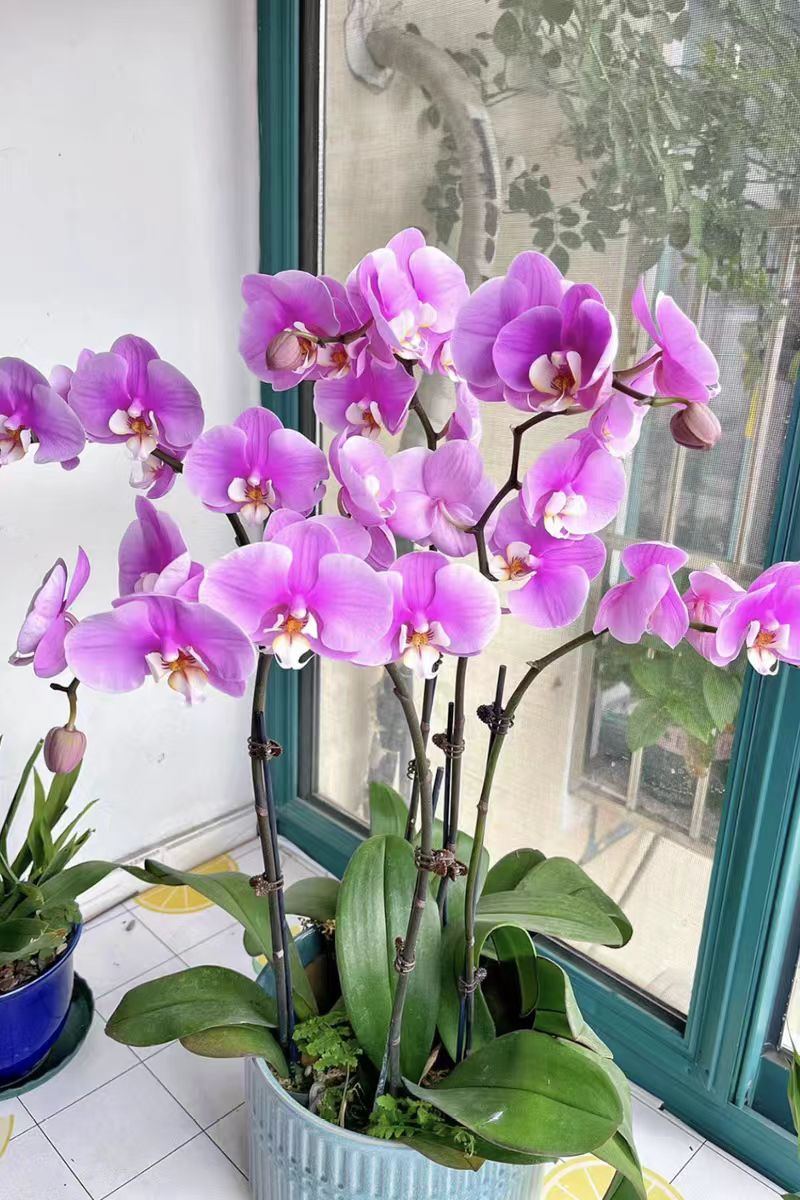The best way to deal with rotten old roots of Phalaenopsis (moth orchids)

Share with
The most feared problem when cultivating Phalaenopsis orchids is the rotting of old roots. Once you notice the roots turning black, soft, and mushy, don't worry. Below is a guide on how to deal with the rotting of old roots in Phalaenopsis orchids, as well as daily maintenance tips.
### I. Emergency Treatment for Rotting Old Roots in Phalaenopsis Orchids
1. **Stop watering immediately** upon discovering rotten roots to prevent the roots from continuing to soak. Gently remove the Phalaenopsis orchid from its pot, and you can slightly shake the plant to let the substrate fall off naturally. If the substrate is compact, use scissors to separate it along the pot wall to reduce root damage.
2. Use your fingers to clear the substrate around the roots and locate the blackened, soft, and mushy roots. Be sure to use a disinfected sharp scissor or knife (sterilized by burning over a flame or boiling in water) to completely cut off the rotten roots. When pruning, take care to protect the healthy roots and avoid accidental damage.
3. The pruned wounds are "gaps" for pathogens to invade and need immediate treatment! Apply carbendazim powder to the wounds, or soak them in a potassium permanganate solution or plant ash for 0.5–2 hours for sterilization. After disinfection, place the plant in a cool, ventilated area to air-dry until the wounds slightly shrink.
4. Prepare new substrate such as sphagnum moss, bark, or clay pebbles. Soak them in water 2–3 days in advance to soften, then soak them in a carbendazim solution for 1–2 hours for disinfection, and finally drain them until they are slightly damp. The new substrate not only provides nutrients but also reduces pathogen residues.
5. Place the disinfected Phalaenopsis orchid into a new pot and gently fill the roots with the substrate, avoiding excessive compaction that may affect air permeability. Do not water immediately after potting; place it in a ventilated and bright area for seedling recovery. Water sparingly after the substrate surface dries. After about 10 days, gradually increase light exposure to help the plant regain vitality.
### II. Preventive Maintenance Methods for Rotting Old Roots in Phalaenopsis Orchids
1. The roots of Phalaenopsis orchids are aerial roots that fear waterlogging. Follow the principle of "watering when dry, drying when watered," and water only when the substrate surface is dry and white. It is better to keep it slightly dry than overly wet, especially reducing the amount of watering in winter.
2. Maintain good air circulation in the maintenance environment to avoid stuffiness and humidity. When cultivating indoors, open windows daily or use a fan to assist with ventilation, reduce humidity, and minimize bacterial growth.
3. The suitable growth temperature for Phalaenopsis orchids is 15–30°C. Temperatures below 10°C easily cause frost damage and root rot, while temperatures above 35°C accelerate respiratory consumption. In summer, pay attention to shading and cooling, and in winter, move the plant indoors in time for warmth.
4. Avoid long-term shade and place the Phalaenopsis orchid in a bright area with scattered light, such as near a window, with 4–6 hours of light per day.
In short, mastering these skills can keep Phalaenopsis orchids away from root rot troubles and ensure they bloom every year.
Tagged in :




Leave a Reply